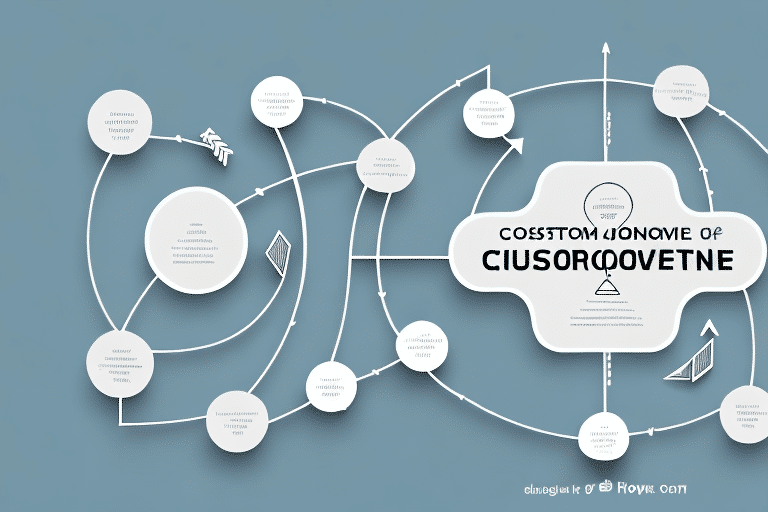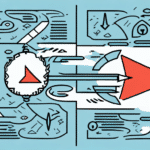Becoming a Customer Retention Advisor: A Guide to Retaining Customers and Increasing Profits
As a business owner or marketer, attracting new customers is essential, but retaining existing ones is equally, if not more, important. Customer retention is a critical factor in the success of any business, often overlooked in favor of acquisition strategies. This guide delves into the intricacies of customer retention and offers practical strategies to enhance it, ensuring sustained growth and profitability.
Why Customer Retention is Critical for Business Success
Acquiring a new customer can cost up to five times more than retaining an existing one. Furthermore, increasing customer retention rates by just 5% can boost profits by 25-95% [Source]. This significant difference highlights the financial benefits of focusing on retaining customers.
Beyond cost-effectiveness, customer retention fosters a loyal customer base that can act as brand ambassadors. Satisfied customers are more likely to recommend your business to others and leave positive reviews, enhancing your reputation. Conversely, losing customers can harm your brand image and lead to negative word-of-mouth.
Improving customer retention can be achieved by providing exceptional customer service. Customers who feel valued and appreciated are more likely to continue doing business with a company. This can be accomplished through personalized interactions, prompt responses to inquiries or complaints, and exceeding their expectations. Additionally, implementing loyalty programs or incentives can further encourage customers to remain loyal to your brand.
Understanding the Psychology of Customer Retention
Retaining customers involves more than offering a quality product or service; it requires understanding the psychological factors that influence their loyalty.
Building Trust
Trust is foundational for customer retention. It is earned through consistency, transparency, and responsiveness. Businesses must deliver on their promises and maintain open lines of communication, demonstrating a commitment to customer satisfaction.
Creating a Sense of Belonging
Customers desire a sense of community. Companies can cultivate this by offering personalized experiences, addressing customers by name, providing tailored recommendations, and making them feel valued as individuals.
The Role of Emotions
Emotional connections play a vital role in customer retention. Brands that evoke positive emotions such as joy, excitement, or gratitude are more likely to foster loyalty. Ensuring positive customer experiences and meaningful interactions can strengthen these emotional bonds.
Key Metrics to Track for Measuring Customer Retention
Accurate measurement is essential for improving customer retention. Key metrics include:
- Customer Lifetime Value (CLV): The total revenue a customer is expected to generate over their entire relationship with your company.
- Customer Churn Rate: The percentage of customers who discontinue their relationship with your business within a specific period.
- Net Promoter Score (NPS): A measure of how likely customers are to recommend your business to others.
- Customer Satisfaction (CSAT): An indicator of how satisfied customers are with your product or service.
These metrics should be analyzed collectively to gain a comprehensive understanding of your customer retention efforts. For instance, a high NPS may indicate customer satisfaction, but a simultaneous high churn rate could reveal underlying issues that need addressing.
Strategies to Improve Customer Retention and Boost Profits
Implementing effective strategies can significantly enhance customer retention. Here are some actionable approaches:
1. Build a Strong Customer Relationship Management System
A robust Customer Relationship Management (CRM) system helps track customer interactions, identify trends, and personalize communications. Integrating CRM with other business tools can streamline processes and improve customer service [Salesforce CRM].
2. Focus on Personalization
Personalized interactions make customers feel recognized and valued. Use customer data to tailor communications, recommend products, and provide customized support, enhancing their overall experience.
3. Identify and Address Common Reasons for Customer Churn
Understanding why customers leave is crucial. Common reasons include poor customer service, lack of value, or better alternatives. Conduct surveys and analyze feedback to identify these factors and implement solutions proactively.
4. Leverage Technology to Enhance Customer Retention
Utilize technology to automate and improve retention efforts. Tools such as email marketing software, customer feedback platforms, and social media monitoring tools can help maintain customer engagement and identify areas for improvement.
5. Create an Effective Loyalty Program
A well-designed loyalty program can incentivize repeat business and referrals. Ensure the program offers meaningful rewards, is easy to understand, and aligns with customer preferences to maximize participation and benefits.
6. Offer Exceptional Customer Service
Exceptional customer service is a cornerstone of customer retention. Train your team to be friendly, knowledgeable, and responsive. Provide multiple channels for support, including phone, email, and live chat, to accommodate customer preferences.
7. Monitor Customer Feedback and Respond Promptly
Regularly collect and analyze customer feedback to gauge satisfaction and identify issues. Respond promptly to complaints and concerns, demonstrating that you value their input and are committed to improvement.
Measuring the ROI of Your Customer Retention Efforts
Assessing the return on investment (ROI) of customer retention strategies is essential for ongoing success. Key metrics for measuring ROI include:
- Revenue Generated from Existing Customers: Assess the income derived from repeat business.
- Customer Lifetime Value (CLV): Estimate the total revenue a customer will generate over their relationship with your company.
- Cost of Customer Acquisition vs. Retention: Compare the costs involved in acquiring new customers against retaining existing ones.
- Net Promoter Score (NPS): Evaluate customer loyalty and their likelihood to recommend your business.
Regular tracking and analysis of these metrics enable data-driven decisions to refine retention strategies. Additionally, consider qualitative aspects like customer satisfaction and loyalty, measured through surveys and feedback, to complement quantitative data.
Best Practices for Communicating with Customers to Increase Loyalty
Effective communication is crucial for building and maintaining strong customer relationships. Follow these best practices:
- Be Responsive and Timely: Address customer inquiries and issues promptly.
- Communicate Proactively and Transparently: Keep customers informed about updates, changes, and important information.
- Listen to Feedback and Act on It: Show that you value customer opinions by implementing their suggestions.
- Personalize Your Communication: Tailor messages to individual customer preferences and behaviors.
Additionally, leveraging multiple communication channels—such as email, phone, social media, and live chat—ensures you meet customers where they are. Providing educational content like tutorials and how-to guides can also enhance the customer experience, positioning your brand as a trusted advisor.
Understanding the Lifetime Value of Your Customers
Customer Lifetime Value (CLV) is a pivotal metric for assessing the long-term profitability of your customer base. Calculating CLV involves estimating the total revenue a customer will generate throughout their relationship with your company. Understanding CLV helps in making informed decisions about marketing spend, customer acquisition, and retention strategies.
Consider the cost of acquiring new customers when calculating CLV. High acquisition costs make retention efforts even more critical, as keeping existing customers becomes a more viable strategy for sustained profitability.
To enhance CLV, offer additional products or services to your existing customers. Cross-selling and upselling not only increase revenue but also strengthen the customer relationship, creating a loyal customer base that continues to generate value over time.
How to Use Social Media to Enhance Your Customer Retention Strategy
Social media is a powerful tool for enhancing customer retention. It enables businesses to stay connected with their audience, offer exclusive bonuses, and provide support in real-time. Additionally, social media platforms are excellent for soliciting and acting on customer feedback.
Creating engaging content that resonates with your audience—such as blog posts, videos, and infographics—keeps customers interested and invested in your brand. Consistently sharing high-quality content not only maintains engagement but also reinforces your brand’s value proposition.
Utilize social listening tools to monitor conversations about your brand. This helps in identifying potential issues or concerns early, allowing you to address them proactively. Being responsive and proactive on social media builds trust and loyalty, which are essential for customer retention and revenue growth.
In conclusion, customer retention is a vital component of business success. By understanding the psychological factors that drive loyalty, measuring key metrics, and implementing effective strategies, businesses can improve retention rates and boost profits. Personalize communication, address the reasons for churn, leverage technology, and utilize social media effectively to create a loyal and engaged customer base. Regularly measure the ROI of your efforts to ensure that your strategies are effective and aligned with your business goals.




















